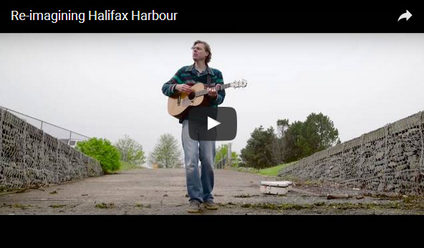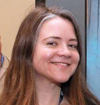
Inspired by my father's love of fishing, swimming, and camping in the Birch Cove area near Halifax, I became interested in all things watery and wild. But to date I have not touched the water of Halifax Harbour, in the city where I was raised and choose to live.
Once you move from a rural area to the city, this disconnect is almost expected. Halifax has grown into a naval and industrial port city: access to the harbour is in many places devoted to industrial uses. Over the years, the Harbour has been the recipient of sewage, toxic waste from ships, and even 33 Volvos according to sources at Bedford Institute for Oceanography.
Halifax Harbour is not unique. St. John’s Harbour, up until last year, was home to the “bubble” – a burbling pool of sewage, and has a large fence limiting human contact to the shoreline. Victoria, BC also has a strong industrial history, making much of its harbourfront in need of remediation. Based on upstream use, Saint John, NB has a strong disconnect downtown as well.
While people still fish recreationally and commercially in Halifax Harbour, for many its waters are off limits because they are difficult to access and because of our history of treating the harbour as a garbage dump.
But when you consider that Halifax Harbour is an enormous “blue commons” in the heart of our city, this disconnect is a huge missed opportunity. So many people who work, live and visit the shores of what the Mi’kmaq call Chebucto, share a “look, don't touch” approach to the harbour, for what otherwise should be our shared playground and entryway to experiencing ocean life.
I wanted to change this, so I came up with the idea of “re-imagining our harbour.” I've met with citizens, talked to people who live and work in and around the harbour, and consulted with experts about the harbour as an ecosystem. This project will bring together existing information about the Harbour, ask people to engage with this information by gathering their own observations, and generate awareness and inspire creative thinking by working with artists.
One of these citizens is “Halifamous” musician Joel Plaskett, who shares his thoughts about the harbour. He considers crossing by ferry on a daily basis one of the best things to do in this town.
People still flush paints, medicines, and other ecologically damaging material down their drains because of a misunderstanding of their place and impact in their drainage basin or watershed. And even with sewage treatment in place for some time, hormone disruption caused by pharmaceuticals, the spread of invasive species, and sea level rise caused by climate change still pose as threats to the health of our harbour. Development close to the coast can damage natural processes and places - such as salt marshes and wetlands - and in doing so, can worsen the impacts of climate change through the loss of ecological services that these naturally provide in healthy, protected shorelines.
I hope this program will inspire people in other harbour towns to re-imagine the heart of their cities as places we can all identify as our home.
Starting now, let's aim to understand what is under the surface of our Harbours and plan to make our coastlines usable by citizens.
With thanks,
Kelly Schnare - Sierra Club Canada Foundation - Atlantic Chapter


